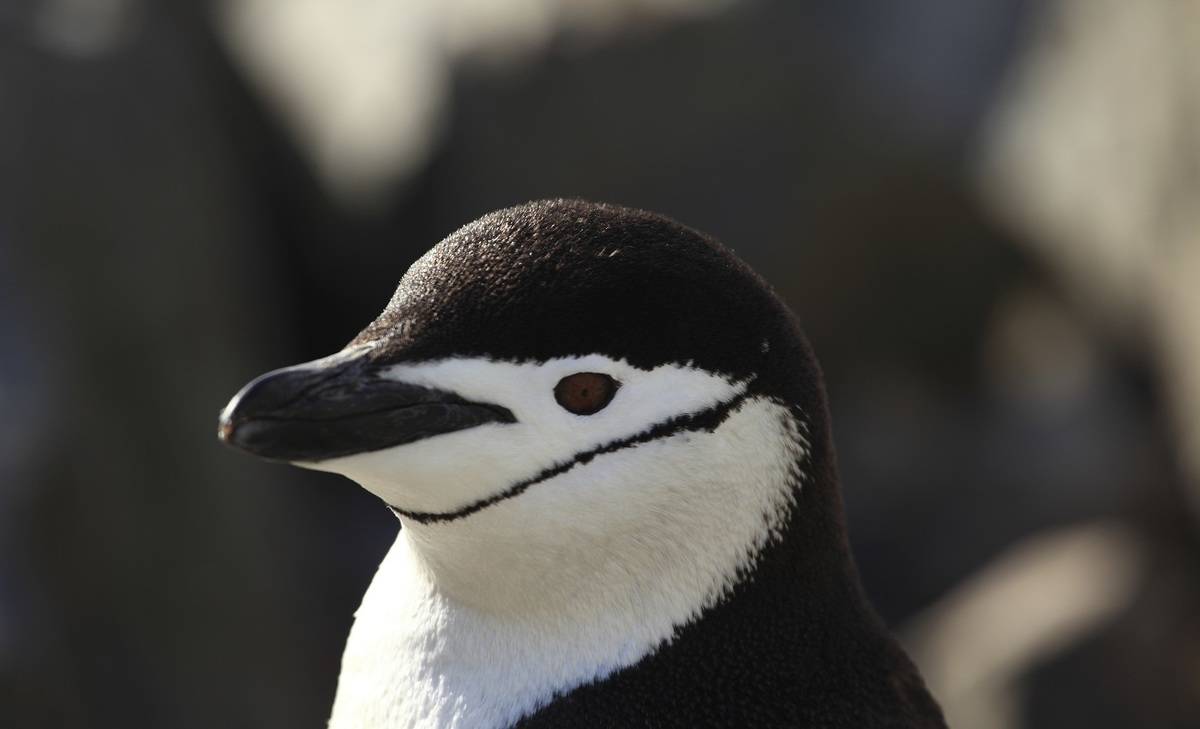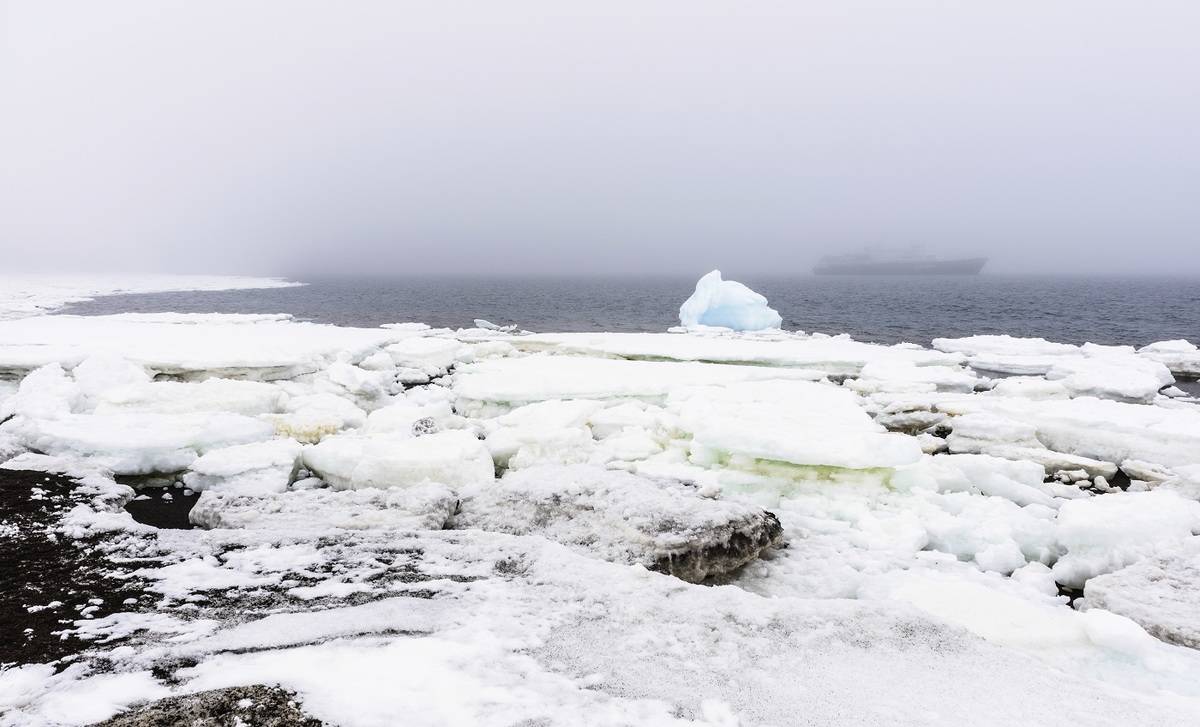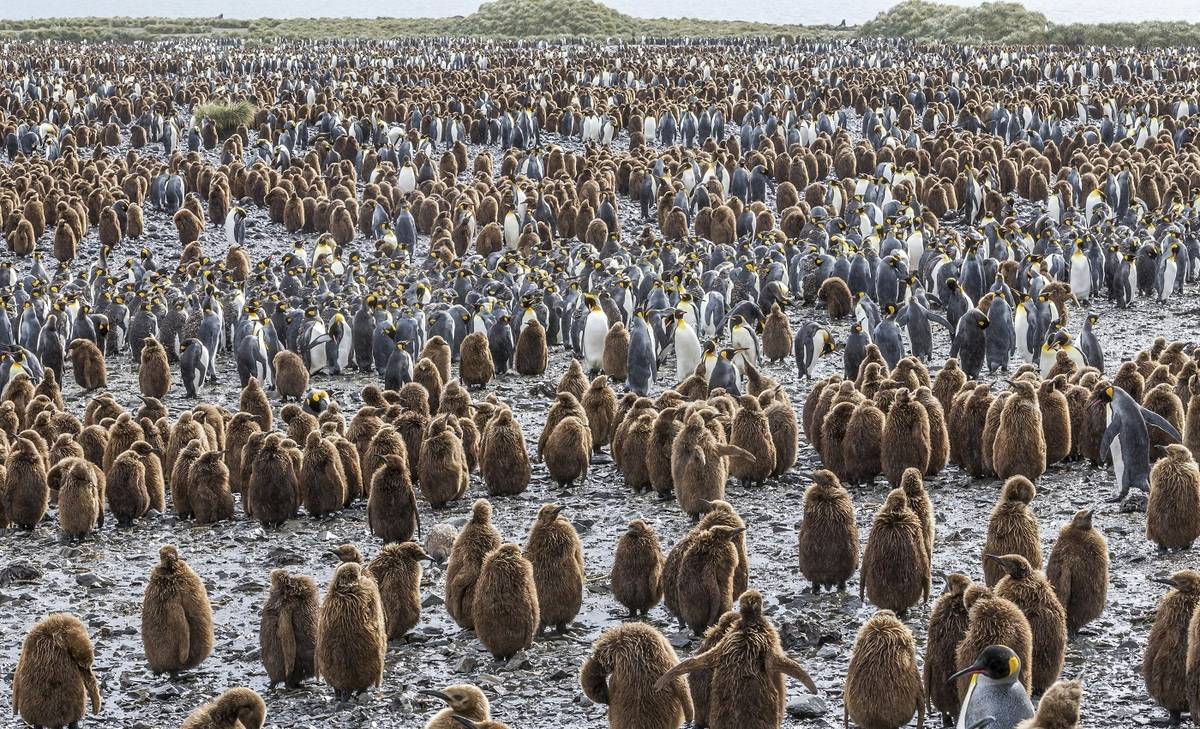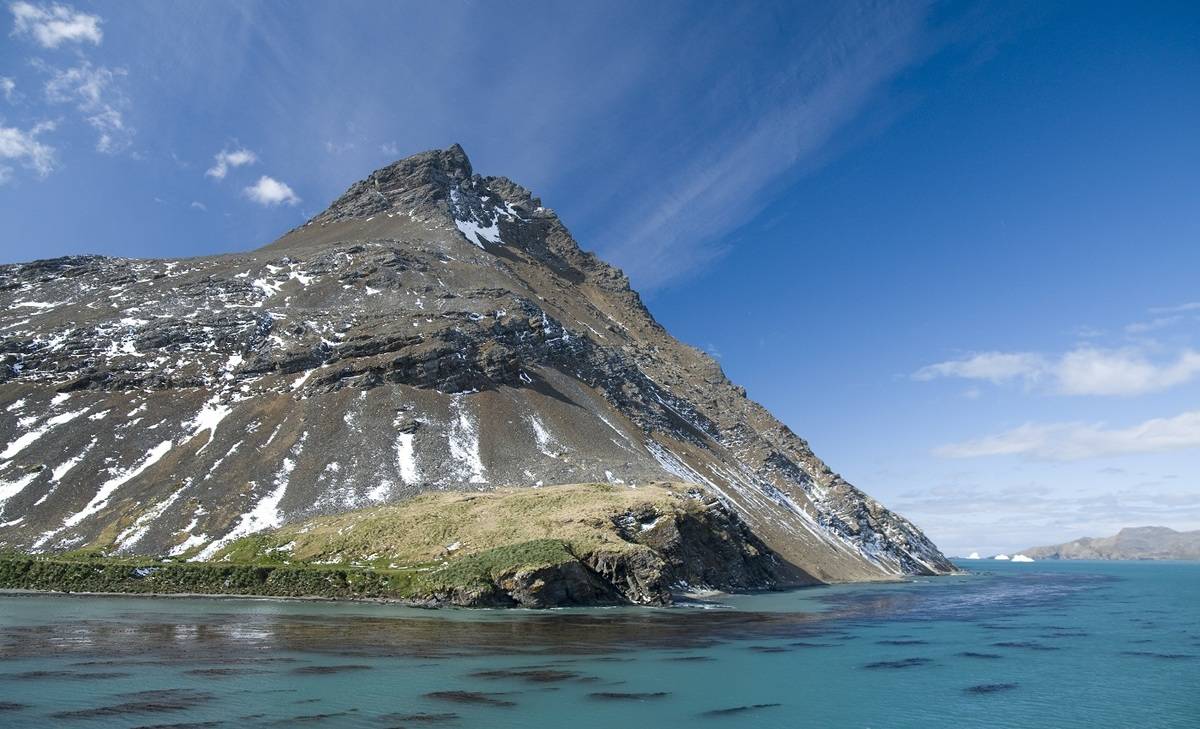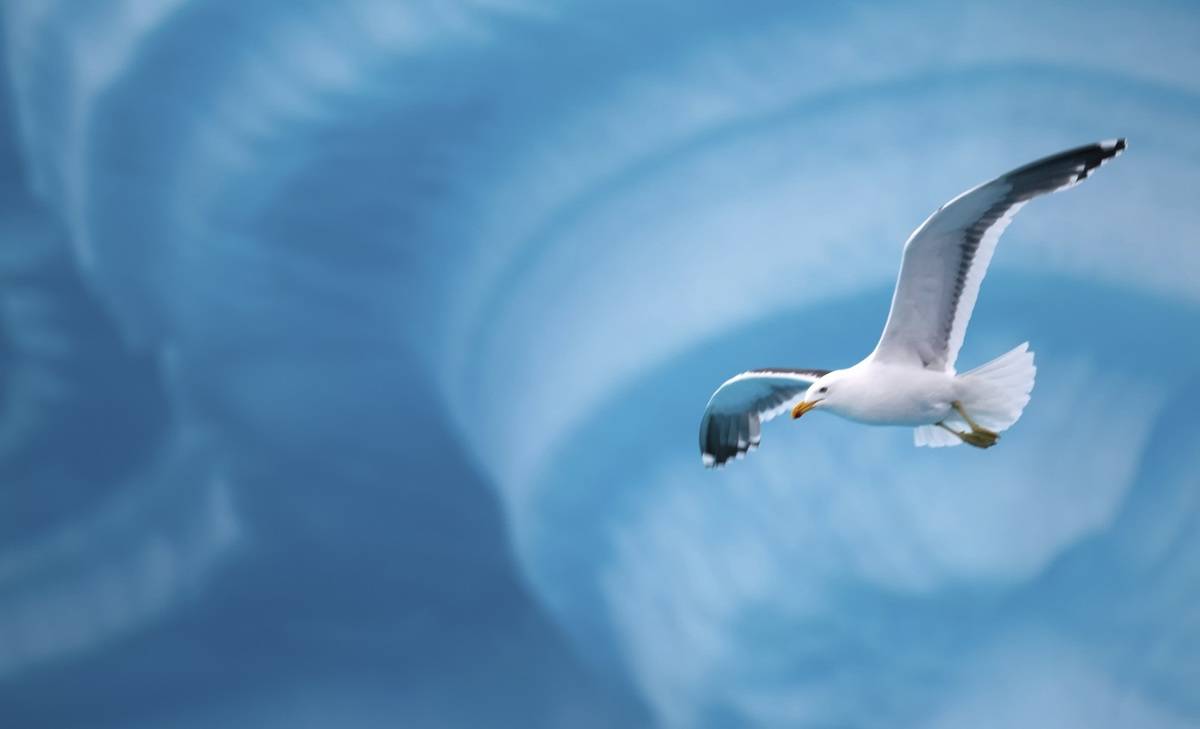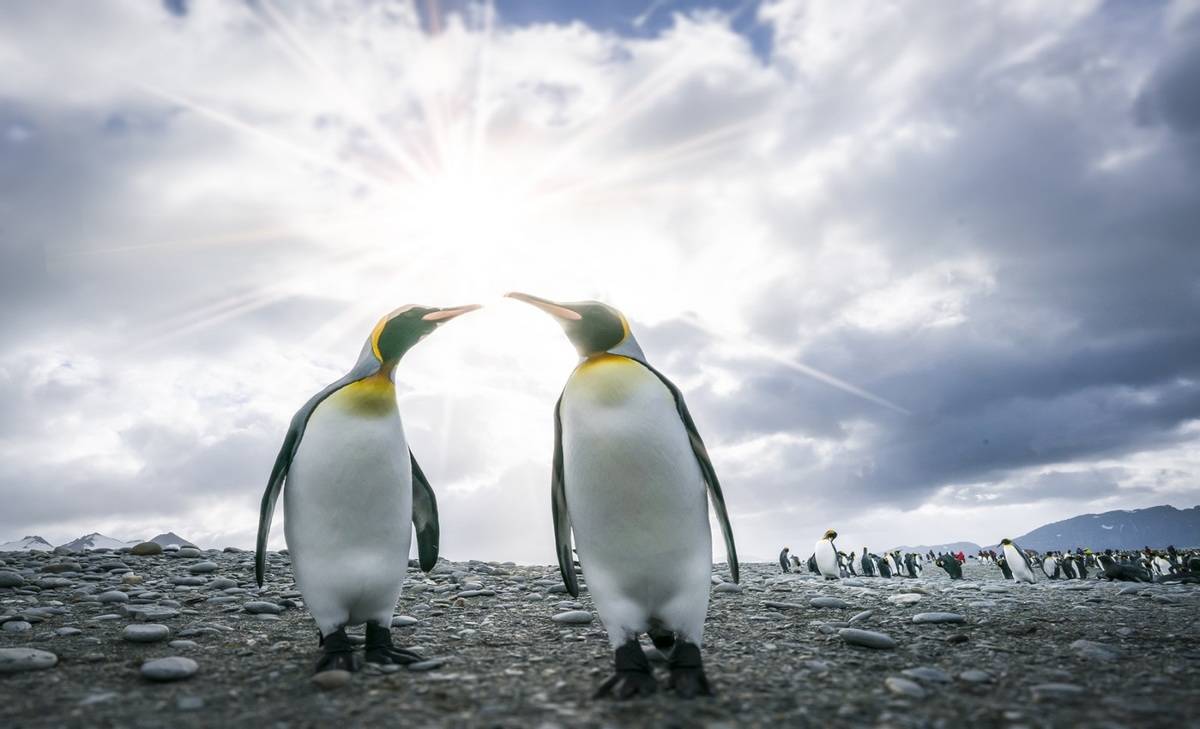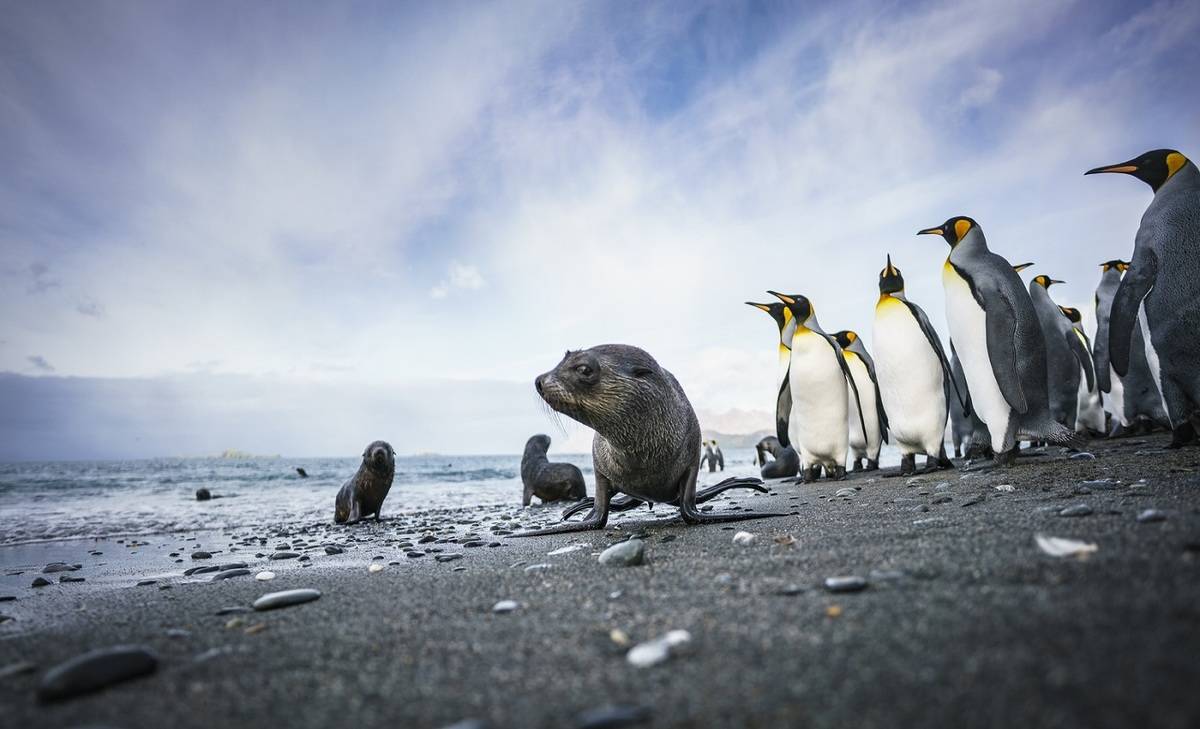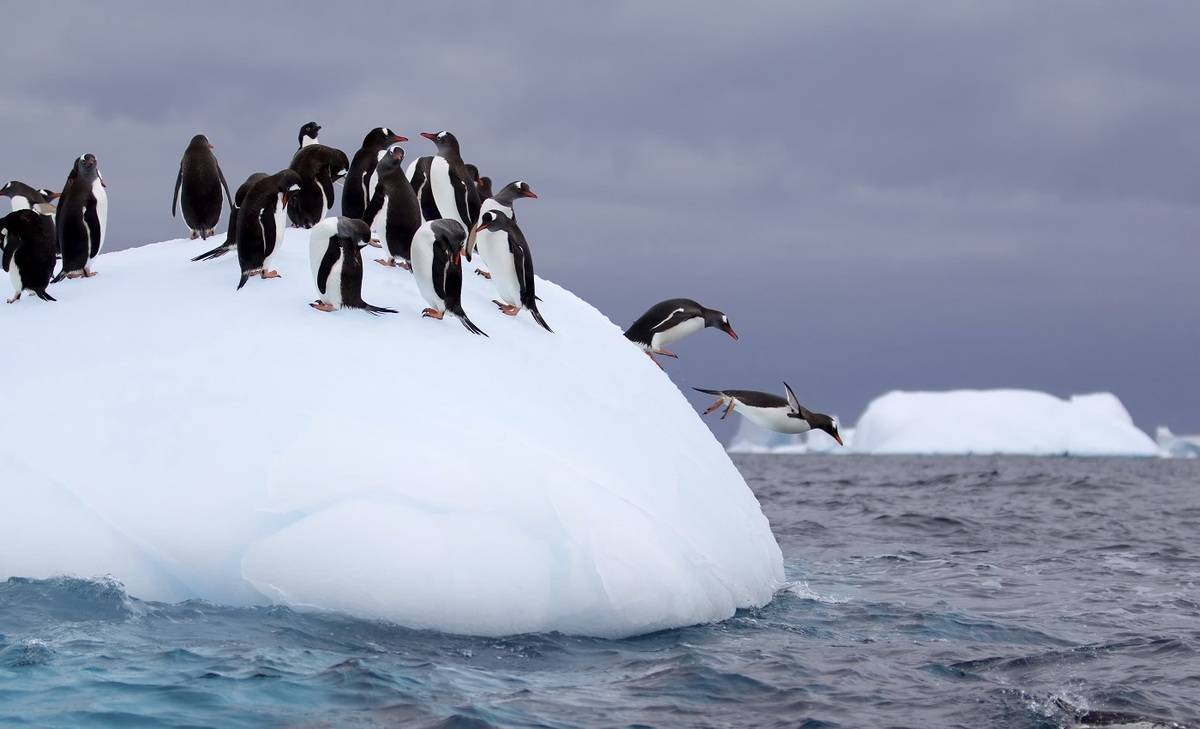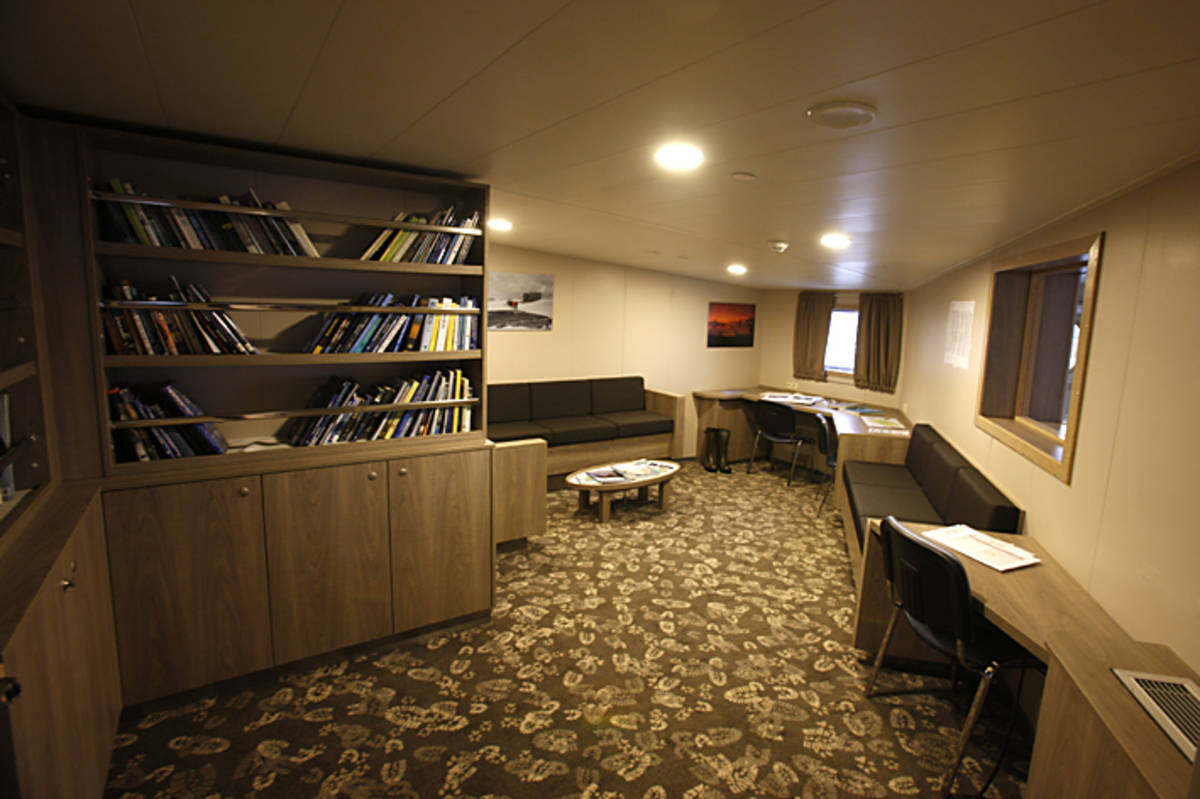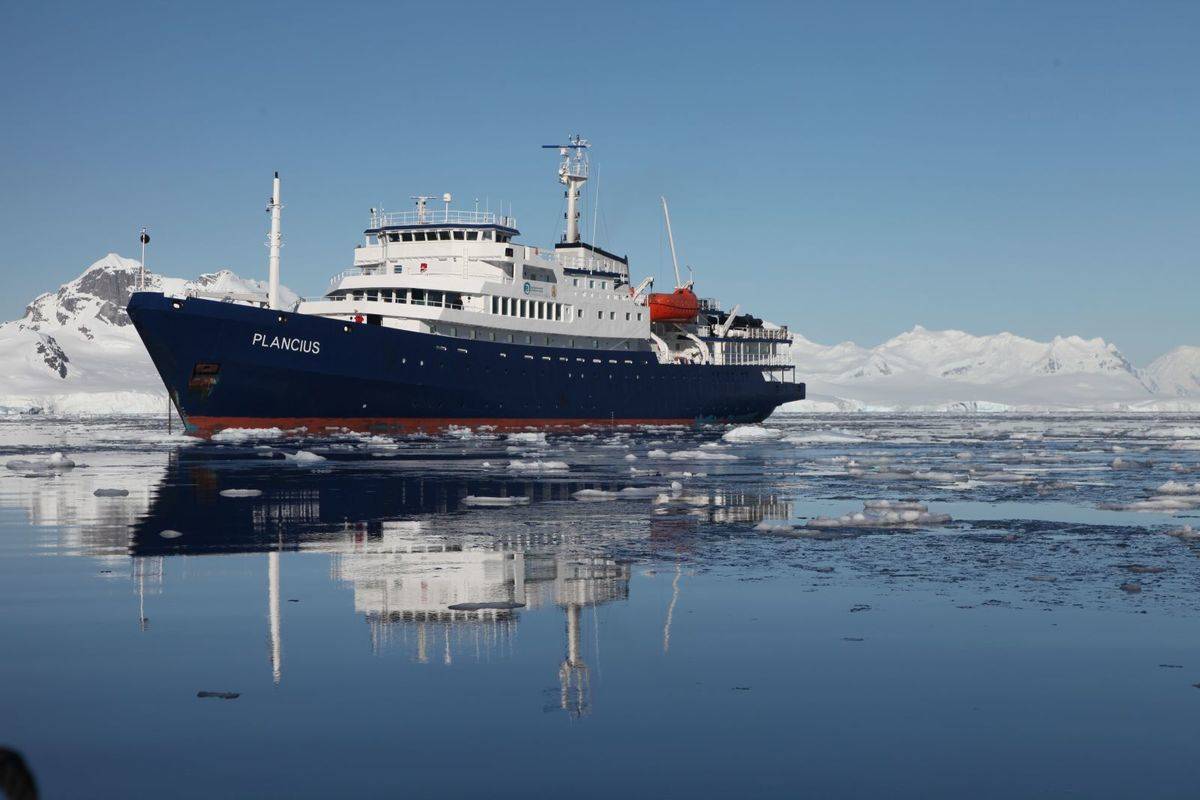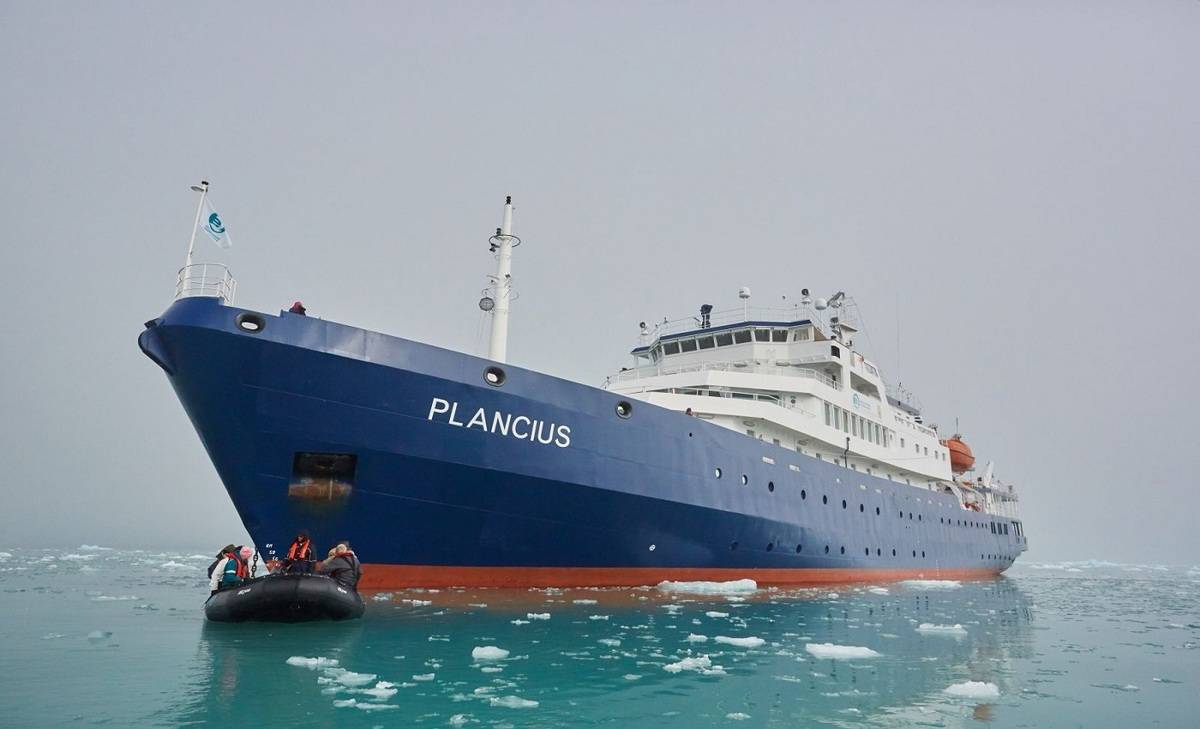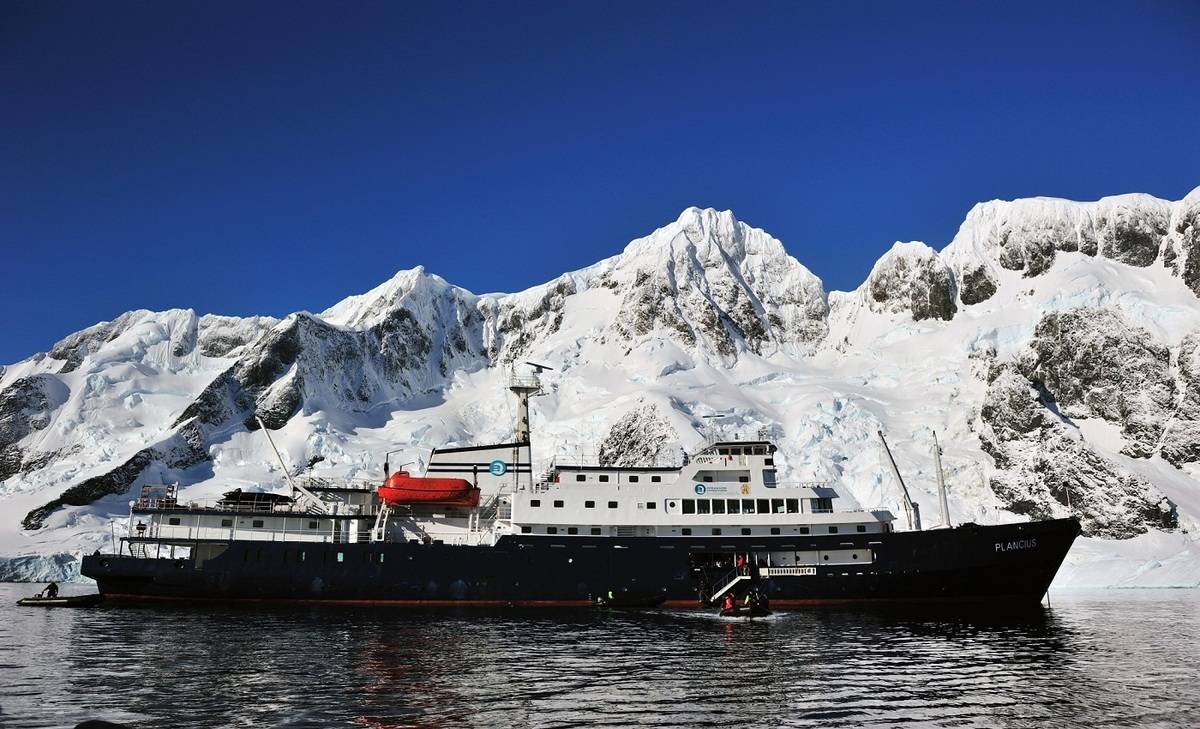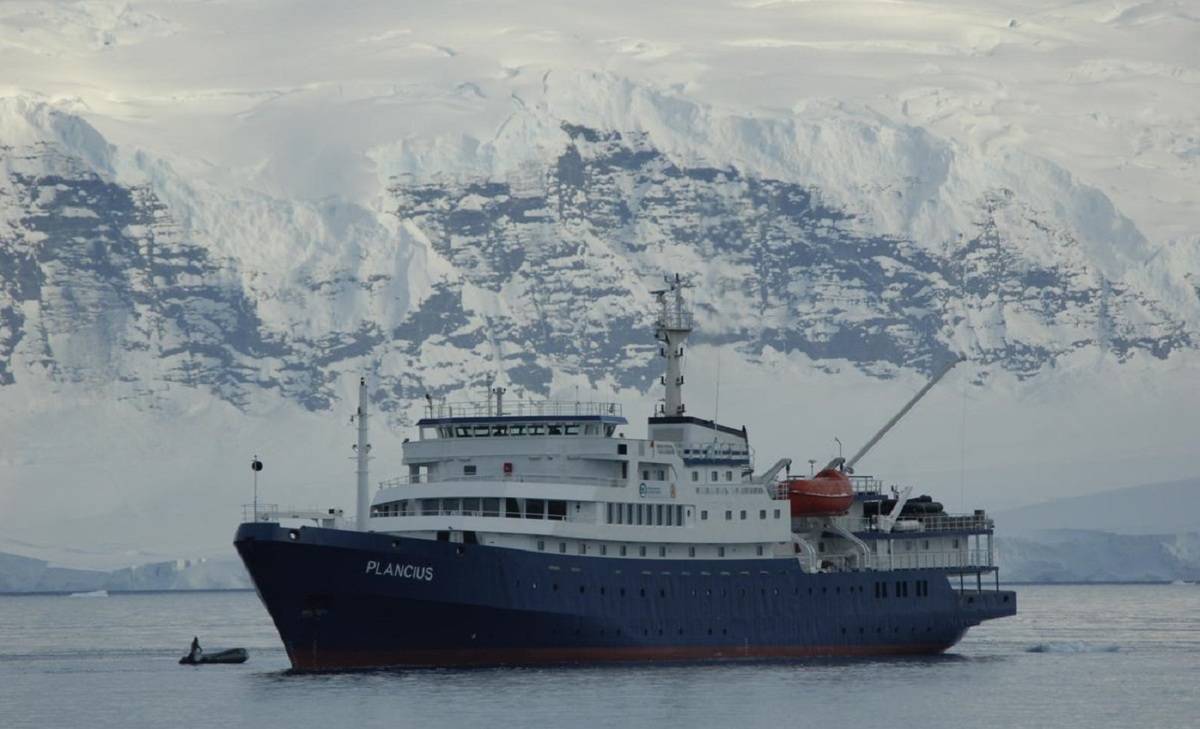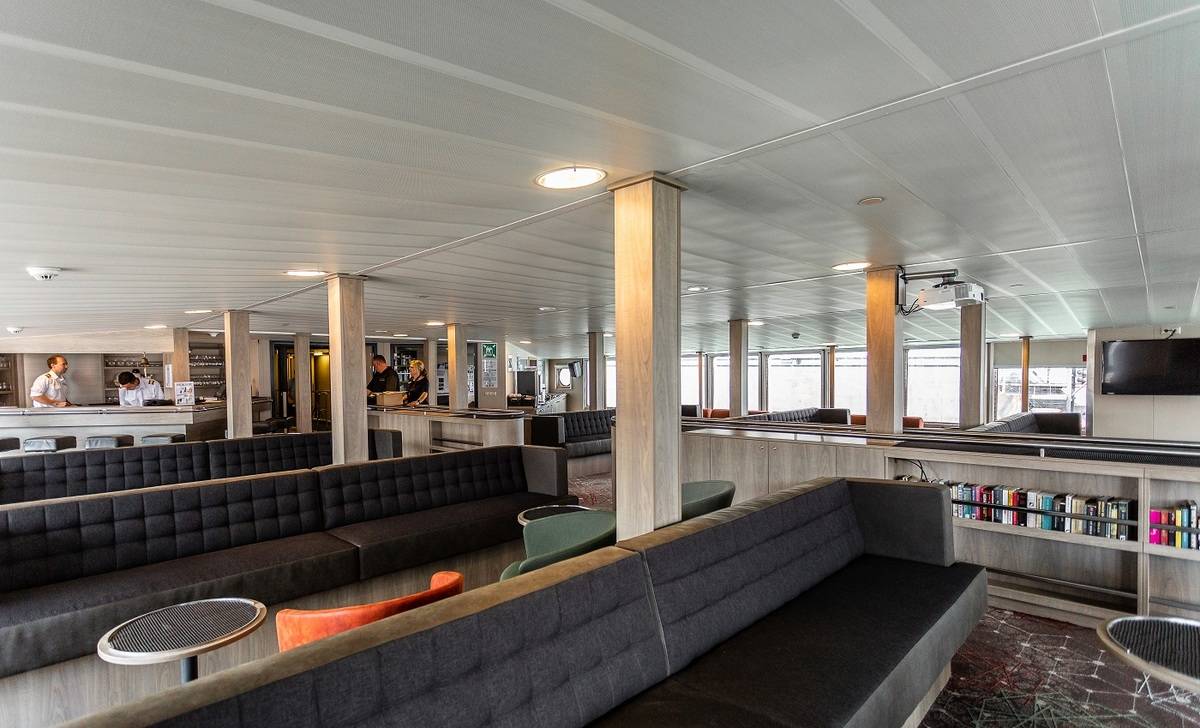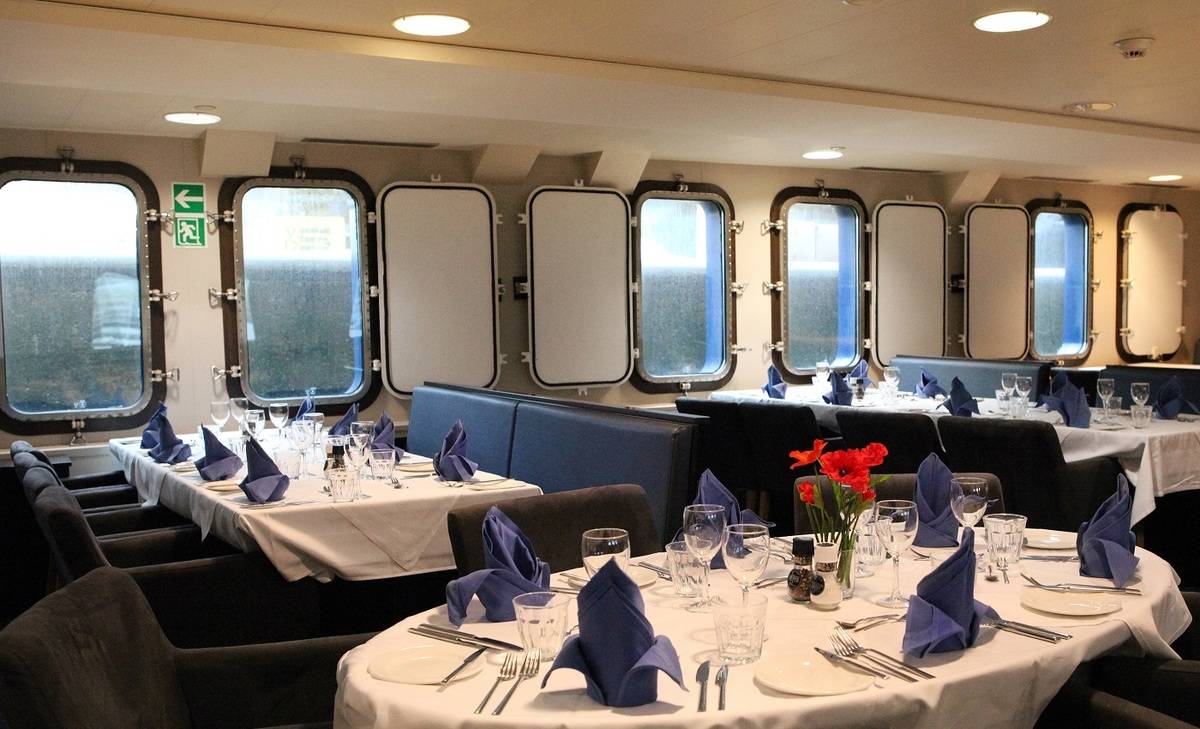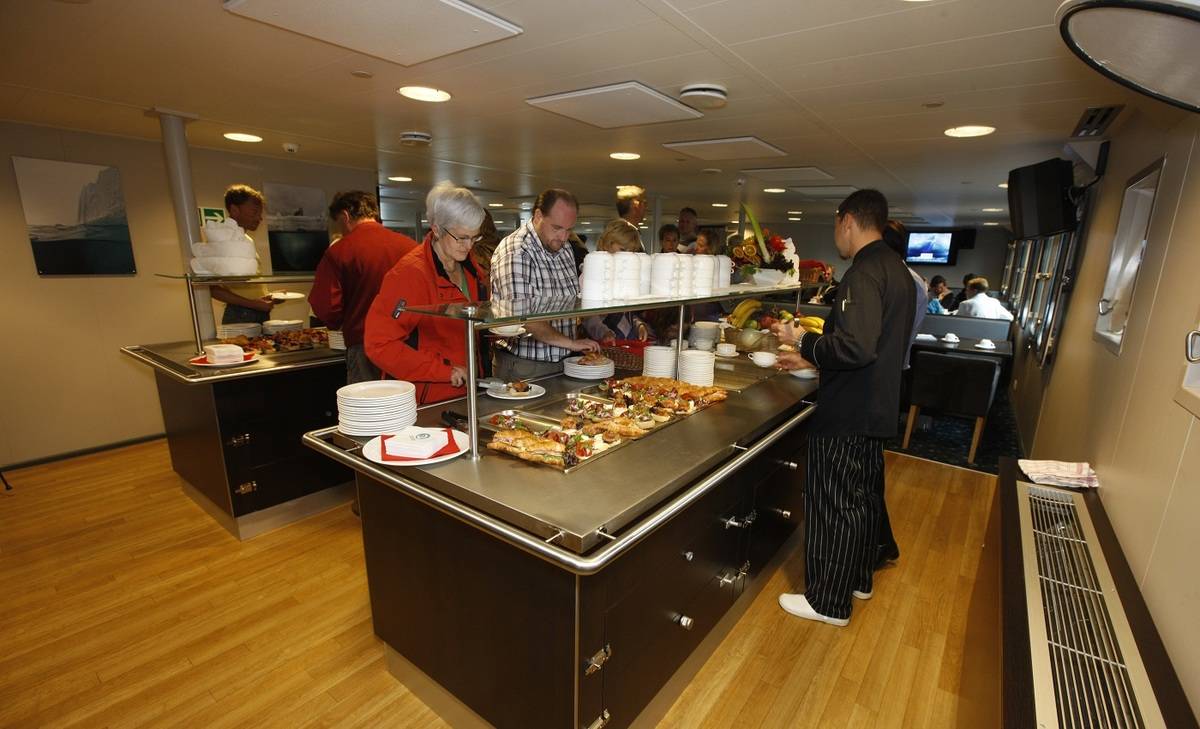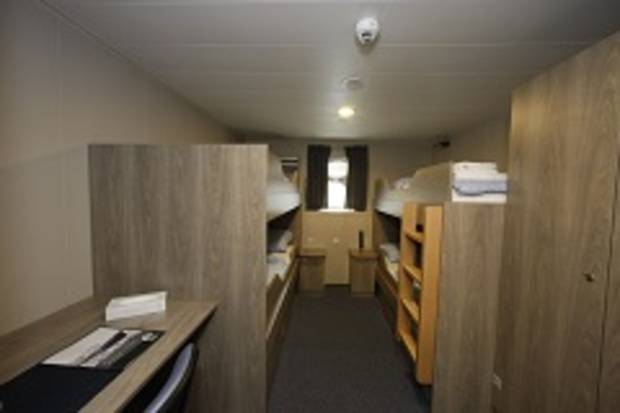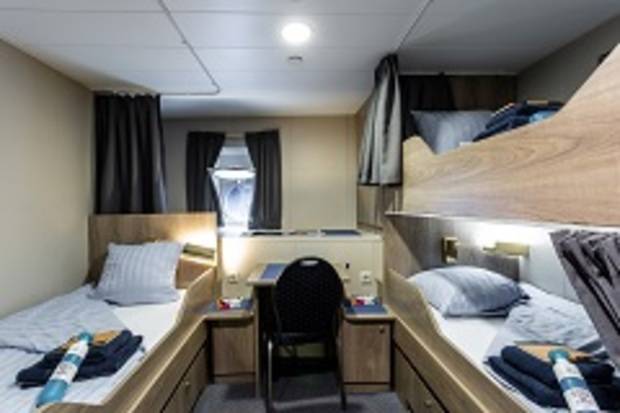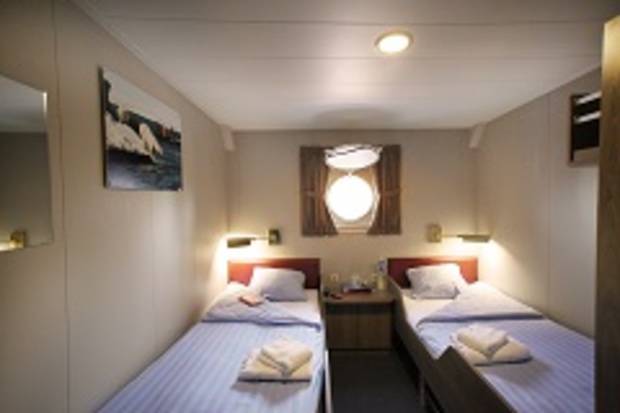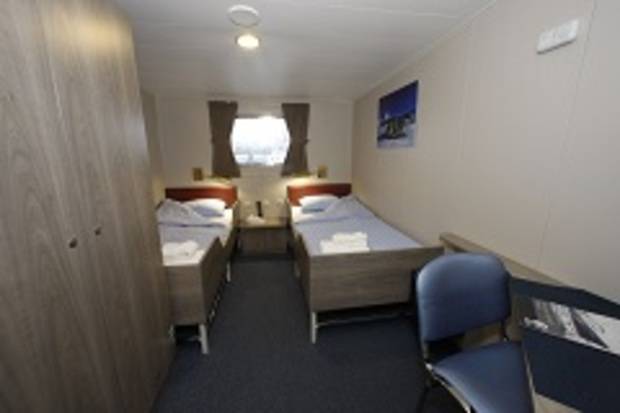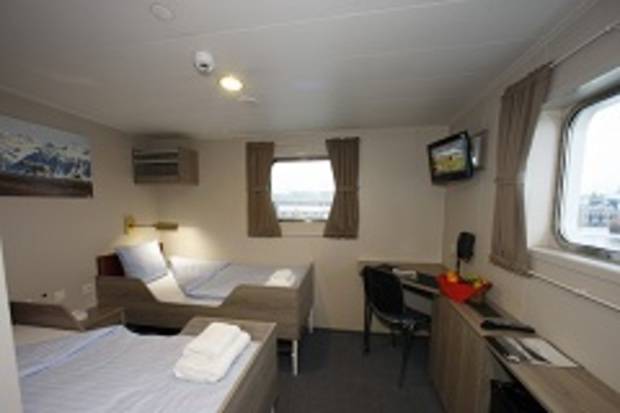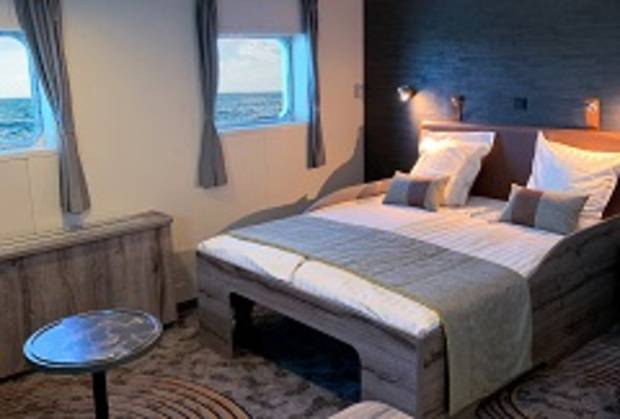Falklands, South Georgia and Antarctic Peninsula
20 Days - Plancius
This Falkland Islands, South Georgia, and Antarctic Peninsula cruise is an animal-lover’s dream come true. The expedition explores one of the last untamed areas on Earth – a land of ruggedly beautiful landscapes and amazingly varied wildlife.

Home » 20 Day M/V Plancius: Falklands, South Georgia and Antarctic Peninsula
Itinerary Highlights
- Meet thousands of King Penguins at South Georgia
- Pay your respects at Shackleton's grave
- Admire the breathtaking scenery of Antarctic Peninsula
- Visit a scientific station on Laurie Island
Itinerary in Brief
- Day 1: Embark in Ushuaia
- Day 2: At sea
- Day 3: Falkland Islands
- Day 4: Port Stanley, Falkland Islands
- Day 5-6: At Sea
- Day 7-10: South Georgia
- Day 11: At Sea
- Day 12: South Orkney Islands
- Day 13: At Sea
- Day 14-17: Antarctic Peninsula
- Day 18-19: At Sea
- Day 20: Disembark in Ushuaia
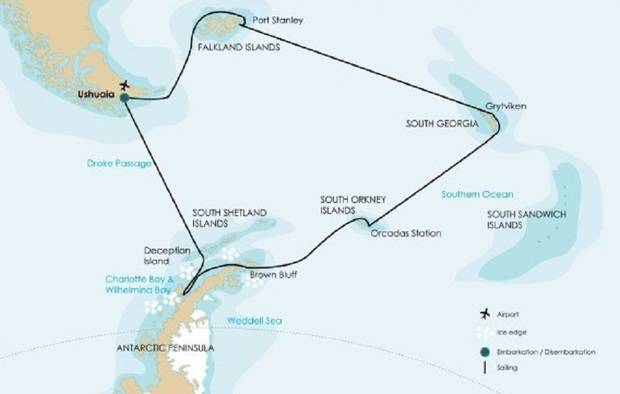
Day 1: Departure from Ushuaia
Your voyage begins where the world drops off. Ushuaia, Argentina, reputed to be the southernmost city on the planet, is located on the far southern tip of South America. Starting in the afternoon, you embark from this small resort town on Tierra del Fuego, nicknamed “The End of the World,” and sail the mountain-fringed Beagle Channel for the remainder of the evening.
Day 2: At Sea
In the Westerlies the ship is followed by several species of albatrosses, storm petrels, shearwaters and diving petrels
Day 3: Falkland Islands
The Falkland Islands offer an abundance of wildlife that is easily approachable, though caution is always advised. These islands are largely unknown gems, the site of a 1982 war between the UK and Argentina. Not only do various species of bird live here, but chances are great you’ll see both Peale’s dolphins and Commerson’s dolphins in the surrounding waters.
During this segment of the voyage, you may visit the following sites:
Carcass Island – Despite its name, this island is pleasantly rodent-free and hence bounteous with birdlife and many endemic species. Anything from breeding Magellanic penguins and gentoos to numerous waders and passerine birds (including Cobb’s wrens and tussock-birds) live here.
Saunders Island – On Saunders Island you can see the black-browed albatross and its sometimes-clumsy landings, along with breeding imperial shags and rockhopper penguins. King penguins, Magellanic penguins, and gentoos are also found here.
Day 4: Stanley, Falkland Islands
The capital of the Falklands and center of its culture, Port Stanley has some Victorian-era charm: colorful houses, well-tended gardens, and English-style pubs are all to be found here. You can also see several century-old clipper ships nearby, silent witnesses to the hardships of 19th century sailors. The small but interesting museum is also worth a visit, covering the early days of settlement up to the Falklands War. Approximately 2,100 people live in Port Stanley. Admission to the museum is included.
Day 5 - 6: At Sea
On our way to South Georgia we will cross the Antarctic Convergence. Entering Antarctic waters, the temperature will drop by as much as 10 degrees C in the time span of only a few hours. Near the Convergence we will see a multitude of southern seabirds near the ship; several species of Albatrosses, Shearwaters, Petrels, Prions and Skuas.
Day 7 - 10: South Georgia
Today you arrive at the first South Georgia activity site. Please keep in mind that weather conditions in this area can be challenging, largely dictating the program.
Over the next several days, you have a chance to visit the following sites:
Prion Island – This location is closed during the early part of the wandering albatross breeding season (November 20 – January 7). From January on, the breeding adults have found their partners and are sitting on eggs or nursing their chicks. Enjoy witnessing the gentle nature of these animals, which possess the largest wingspan of any bird in the world.
Fortuna Bay – A beautiful outwash plain from Fortuna Glacier is home to a large number of king penguins and seals. Here you may also have the chance to follow the final leg of Shackleton’s route to the abandoned whaling village of Stromness. This path cuts across the mountain pass beyond Shackleton’s Waterfall, and as the terrain is partly swampy, be prepared to cross a few small streams.
Salisbury Plain, St. Andrews Bay, Gold Harbour – These sites not only house the three largest king penguin colonies in South Georgia, they’re also three of the world’s largest breeding beaches for Antarctic fur seals. Literally millions breed on South Georgia during December and January. Only during the mid-season do they peak in their breeding cycle. There will be some young adult Elephant seals as well as this seasons ‘Weaner’s; the young Elephant Seals that have been left to fend for themselves. Watch your step and stay cool when walking the beaches during this time.
Grytviken – In this abandoned whaling station, king penguins walk the streets and elephant seals lie around like they own the place – because they basically do. Here you might be able to see the South Georgia Museum as well as Shackleton’s grave.
In the afternoon of day 10 and depending on the conditions, we will start sailing southwards in the direction of the South Orkney Islands.
Day 11: At Sea
Where the ship is again followed by a multitude of seabirds. At some point we might encounter sea-ice, and it is at the ice-edge where we might have a chance to see some high-Antarctic species like the McCormick Skua and Snow Petrel.
Day 12: South Orkney Islands
Depending on the conditions, you might visit Orcadas Base, an Argentine scientific station on Laurie Island in the South Orkney archipelago. The personnel here will happily show you their facility, where you can enjoy expansive views of the surrounding glaciers. If a visit isn’t possible, you may instead land in Coronation Island’s Shingle Cove.
Day 13: At Sea
We will pass large icebergs and have a good chance of Fin whales on the way south. Also we have the best chances on the trip to see Antarctic Petrels around the ship
Days 14 – 17: Antarctic Peninsula
If the ice conditions permit, you now sail into the Weddell Sea. Here colossal tabular icebergs herald your arrival to the eastern side of the Antarctic Peninsula. Paulet Island, with its large population of Adélie penguins, is a possible stop. You might also visit Brown Bluff, located in the ice-clogged Antarctic Sound, where you could get the chance to set foot on the Antarctic Continent itself.
If conditions aren’t favorable to enter the Weddell Sea from the east, the ship will set course for Elephant Island and head into the Bransfield Strait, between the South Shetland Islands and the Antarctic Peninsula. Here you can attempt to access the Antarctic Sound from the northwest.
The breathtaking scenery continues in the Bransfield Straight and, if conditions allow further South in the Gerlache Strait. Conditions on the Drake Passage determine the exact time of departure.
Day 18 – 19: At Sea
On our way north we are again followed by a great selection of seabirds while crossing the Drake Passage.
Day 19: Ushuaia
Every adventure, no matter how grand, must eventually come to an end. It’s now time to disembark in Ushuaia, but with memories that will accompany you wherever your next adventure lies.
Cabin Details
Quadruple Porthole Cabin
Two upper and two lower berths, one porthole, private shower and toilet, desk and chair, flatscreen TV, telephone and WiFi (supplemented), hair-dryer and ample storage space.
Triple Porthole Cabin
One upper and two lower berths, one porthole, private shower and toilet, desk and chair, flatscreen TV, telephone and WiFi (supplemented), hair-dryer and ample storage space.
Twin Porthole Cabin
Two lower berths, one porthole, private shower and toilet, desk and chair, flatscreen TV, telephone and WiFi (supplemented), hair-dryer and ample storage space.
Twin Window Cabin
Two lower berths, one window, private shower and toilet, desk and chair, flatscreen TV, telephone and WiFi (supplemented), hair-dryer and ample storage space.
Twin Deluxe Cabin
Two lower berths, two windows, private shower and toilet, desk and chair, flatscreen TV, telephone and WiFi (supplemented), hair-dryer and ample storage space.
*corner cabins which are slightly more spacious than the normal twin porthole/window cabins
Superior Cabin
One double bed, one sofa bed, two windows, private shower and toilet, desk and chair, flatscreen TV, telephone and Wifi (supplemented), refrigerator, coffee and tea maker, hair-dryer and ample storage space.
Plancius Deckplan
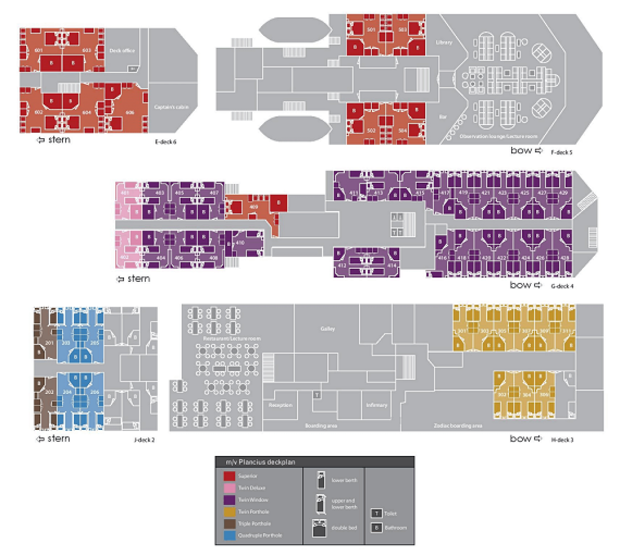
Specifications
- Passengers: 116 in 53 cabins
- Staff & crew: 47
- Length: 89 meters (293 feet)
- Breadth: 14,5 meters (47 feet)
- Draft: 5 meters (16 feet)
- Ice class: 1D (Plancius has a Lloyds class notation 100A1 Passenger ship, Ice Class 1D at a draught of 5 meters)
- Displacement: 3211 tonnes
- Propulsion: 3x Diesel-Electric
- Speed: 10.5 knots average cruising speed
Whats included?
- On-board accommodation
- Port taxes
- Activities/shore excursions as specified
- Lectures and presentations by expedition leaders and naturalist staff
- Transfers and luggage handling
- Waterproof boots on loan
- All meals during the voyage
What’s not included?
- International and internal airfares
- Arrival/departure taxes or reciprocity fees, visa fees where applicable
- Travel insurance
- Gratuities
- Any items not mentioned as included

